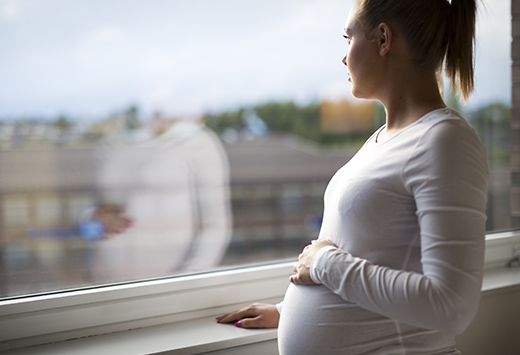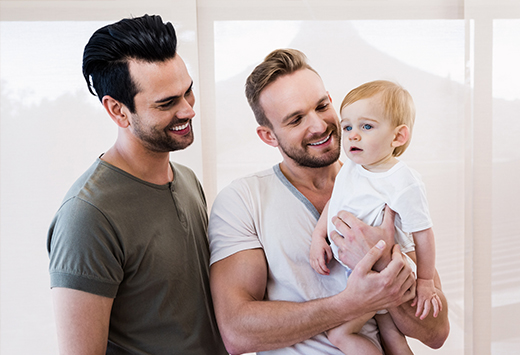When it comes to adoption, many prospective parents are curious and sometimes even concerned about attachment. Attachment plays a key role in the success and happiness of adoptive families in the long term. While a baby will form a bond with their biological mother while in the womb, once they are born, they are open to attachment with other caregivers as well, like their adoptive parents.
Read more to learn about the impact of adoption on attachment between children and parents and practical tips from adoption experts for creating strong, lifelong bonds with your adopted child.
What is attachment?
Attachment refers to the way in which a child or infant is attached to their caregiver and vice versa. It is the process of forming physical, psychological, and emotional bonds between the child and parent. Attachment is formed through physical touch, communication, responding to the child’s needs, creating a safe environment, and more. Attachment is something that adoptive parents and adoption professionals are very mindful about.
What are the different attachment styles?
There are different types of attachment styles found in infants, children, and parents. Beginning to understand them can help prospective adoptive parents be prepared for bonding with their baby when the time comes to bring them home and forge a bond with them.
Secure attachment is the most ideal attachment style as it characterizes a bond between a parent and child that is built on trust, closeness, and feeling safe.
Taking care of your baby’s needs, protecting them, and nurturing them is the best method for ensuring you and your baby experience secure attachments.
Insecure-ambivalent attachment describes a child that is over-attached to their caregiver and is not comfortable or confident exploring on their own. Parents of children who experience this attachment style may meet the needs of their babies, but may be inconsistent or emotionally distant, which causes the child to feel insecure. Insecure-avoidant is an attachment style that refers to a child who is resistant to connecting with their parents because they fear the loss of their caregiver.
Insecure-disorganized attachment is the most insecure attachment style as it occurs when an infant is distressed when separated from their caregiver, but then doesn’t show signs of actually being comforted when their caregiver interacts with them. This attachment style can form if the infant experiences is extremely unpredictable behavior from their caregiver.
Something to keep in mind when thinking about attachment styles is that if an issue arises, children can develop patterns of healthy emotional attachment with therapy, parenting exercises, and proper support. The key to a secure attachment is security, stability, and sensitivity.
How does adoption affect attachment?
Worrying about forming a bond and a positive attachment to their baby is something all parents worry about, but it is especially a worry of prospective adoptive parents as they go through the adoption process.
Sometimes, with domestic adoption, bonding and attachment doesn’t come as easily as the infant may still be bonded with their biological mother. Because of this, attachment is something that prospective adoptive parents need to be mindful of. Do keep in mind that every situation and family is different! Some families may encounter difficulties, but in our experience, most families are able to form bonds right away.
The age that the child is adopted is a critical factor in understanding and approaching attachment for adoptive parents. Older children may already have a strong bond with their biological parent(s) or could have experienced more trauma. These things could make attachment a bit harder to achieve and parents have to approach connection in a different way than they would with an infant.
If you are an adoptive parent and you are feeling disconnected or distant from your child, no matter what their age is, know that you are not alone and there are things you can do to navigate this difficult situation. Joining support groups and seeing a family therapist are great ways to build relationships and encourage healthy communication in your family while building your network of support.
Can I bond with my adopted child the same as my biological child?
This is a concern that many prospective adoptive parents have. The answer of course, is yes! But we understand why parents are worried about this. Most of us never know how we will react in a new situation, but at LifeLong Adoptions, we have seen time and time again strong bonds of love form between adoptive parents and their children. Take a second to read our adoption success stories that show the beautiful, lasting bonds adoptive parents have formed with their babies.
Tips for adoptive parents to bond with their baby
As stated above, secure attachment is the most ideal attachment style for both infants and parents to form a lifelong bond. Because this is something that many prospective and newly adoptive parents have questions about, here are some of our top tips that can help you nurture a secure and healthy bond with your baby.
- Inform yourself on attachment styles, especially secure attachment.
If bonding with your newly adopted infant is something you are particularly concerned about, it is best to inform yourself about secure attachment, and other attachment styles before adopting. Even if you aren’t particularly concerned about this, you should take some time to learn more about attachment and adoption so you can be prepared for any situation. Moreover, you should also be informed about how to best form a secure attachment between you and your baby. You can use this article as a stepping stone to learn more information about this area of adoption.
- Skin-to-skin contact.
Skin-to-skin contact is a great method for forming attachment with your newly adopted infant, especially with newborns, and has benefits for both parents and baby. Skin-to-skin contact is a method used by breastfeeding mothers to bond with their baby, but can be practiced by any parent, biological or adoptive, to form a bond with the baby. Naptime is a great time to do skin-to-skin contact, as the parents can easily hold their baby while they sleep.
- Eye contact.
Another great way to bond with your infant is through eye contact. It may sound obvious, but eye contact is an important way for any parent to bond with their baby. Newborn babies are nearsighted up to the first three months of their life, and can best see objects that are up about 8-15 inches away from their face. Being consistent and thoughtful about making eye contact allows your infant to build a memory of your face. A great time to practice this is during feeding time when you are holding the baby close to you as you feed them.
- Staying close to your baby.
Something that many parents do to bond with their baby is wearing them in a carrier, sling, or wrap. This allows the baby to snuggle close while hearing their parents heartbeat and feeling their body warmth. It also is convenient for a new parent who will need their hands free to take care of household tasks.
- Manage expectations.
Something to keep in mind is that unrealistic expectations could hinder an attachment between parents and an adopted child. Every child, including infants, is a unique individual. Expecting them to act in a certain way or to put high or unrealistic expectations onto them can create distance and limit your connection with them. Ensuring a secure attachment requires patience and responding lovingly to your babies needs to foster a sense of trust and comfort. As the baby’s trust in you grows, so will the love and lifelong bonds!
Love is not defined by genetics.
When it comes to adoption and attachment, it’s important to remember that adoption inherently proves that love is not defined by genetics. You may not the biological parent of your baby, but that does not mean you cannot love them and they cannot love you as if you were related by blood. A parent-child relationship is something that is bound by love, nurturing, and selfless care, and adoption is not an exception to this. Just think about all of the adoption success stories and happy families that have been brought together through the bonds of love!




